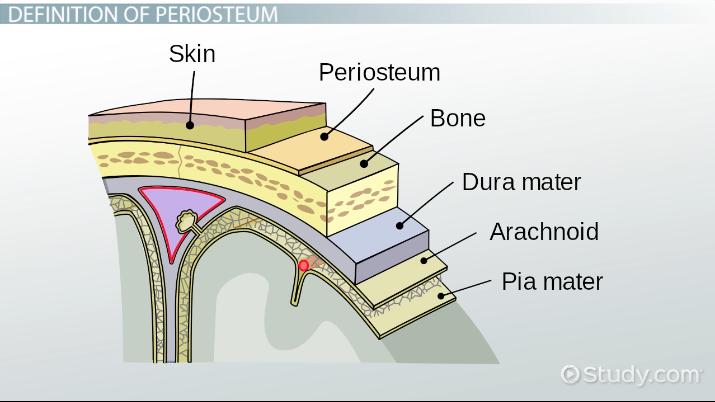Contents
Periosteum: all you need to know about this part of the body
Periosteum is the membrane that envelops the long and flat bones of the body.
Anatomy of the periosteum
This fibrous, whitish and vascularized membrane is found over the entire surface of long bones and flat bones, with the exception of their articular parts.
Even if the periosteum is very discreet, it plays a significant role:
- it is on this membrane that the tendons and ligaments are inserted: it is made up of a connective tissue, at the same time resistant and flexible, which ensures the maintenance of these structures against the bone, even when they are strongly strained by the effort;
- highly vascularized, the periosteum helps to oxygenate and nourish the underlying bone tissue. In particular, it makes it possible to provide all the nutrients essential for osteogenesis, that is to say for the production of new bone cells, in the context of growth, but also of the repair and consolidation of fractures;
- during childhood and adolescence, it allows thick bone growth: in addition to being well vascularized, the periosteum indeed contains a reservoir of cells capable of proliferating and differentiating to form new bone tissue. It is said to have osteogenic potential;
- it keeps this osteogenic potential throughout life, even if it no longer uses it except to fill empty spaces within its perimeter. It no longer enlarges the bone, but helps to rebuild bone tissue in the event of a fracture.
Weaknesses of the periosteum
The fibers of the periosteum are very strong. Their elasticity allows them to withstand being pulled by the tendons or ligaments that they retain, even in the event of strong muscular stress… up to a certain point. This membrane can be attacked and suffer from inflammation:
- if the traction exerted is too strong: in a sprain that suddenly pulls on ligaments, for example, or if the tendons are over-stressed due to a forefoot and toes improperly used during propulsion, the periosteum may react;
- if the bone is subjected to repetitive strain injuries: unsuitable shoes for sport or a bad training ground (too hard or too soft) end up tiring the periosteum;
- if he suffers a direct shock: on skiing or during football training, for example, a blow to the tibia may not break the bone but lead to injury to the periosteum.
Pathologies of the periosteum
Periostitis
Periostitis, often encountered in athletes, especially in athletics, causes severe mechanical pain during exertion. Generally, it is the periosteum of the tibia that is affected: the pain is then felt behind and on the internal side of the tibia. They appear during the race or during the execution of the jumps, but are non-existent at rest.
This acute or chronic inflammation of the periosteum should not be confused with fatigue fracture of thea tibial shaft, in which the pain is permanent.
Periostosis
Periostosis is a pathological thickening of the periosteum, which ends up enveloping the diaphyse of the bone, that is to say its long and cylindrical part. Uncommon, this proliferation of the periosteum is generally associated with thoraco-pulmonary pathology, in particular with bronchopulmonary carcinoma, and is manifested by other clinical signs:
- joint pain ;
- deformation of fingers and nails;
- disorders of dilation and contraction of blood vessels;
- etc.
What treatment for periostitis?
A very common rheumatology problem, periostitis must be treated, not only because the pain is bothersome but also because, if poorly managed, it can become degenerative and disabling.
The first step is to put the affected limb at rest, to allow time for the periosteum to recover. This resting lasts about two weeks. But physiotherapy care can begin immediately:
- icing of the painful area, for at least 30 minutes, in order to reduce inflammation and pain;
- massages of contracted muscle compartments (except in the presence of a hematoma);
- passive stretching;
- strapping contensif ;
- wearing orthotics.
If all the rest and mobilization instructions are followed, the recovery time varies between 2 and 6 weeks. The patient is then allowed to resume sport gradually.
Diagnosis of periostitis
Periostitis can sometimes be revealed on an x-ray. But most of the time, the questioning of the patient and the clinical examination are sufficient. The location of the pain and when it occurs are good indications. As for palpation, it often reveals one or more nodules (which may mimic the presence of a tumor, without being one). More rarely, it is also possible to observe a swelling or an increase in skin temperature.










